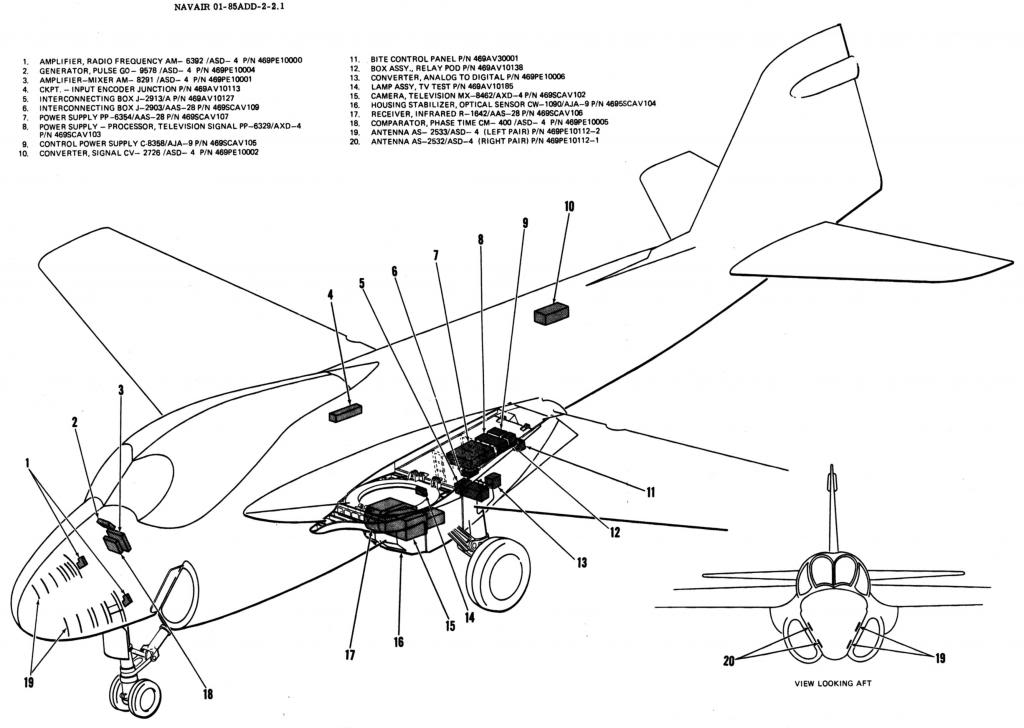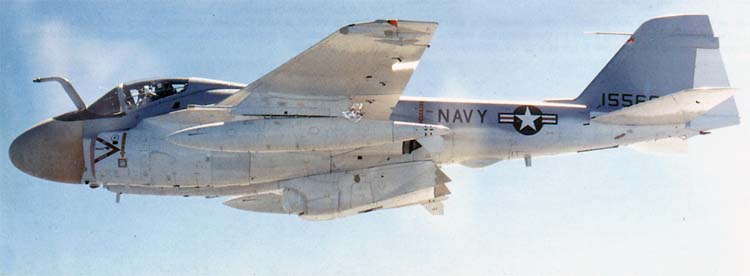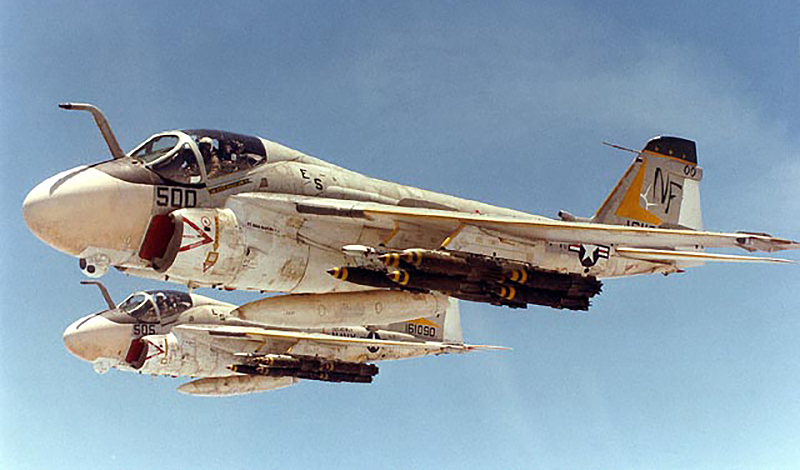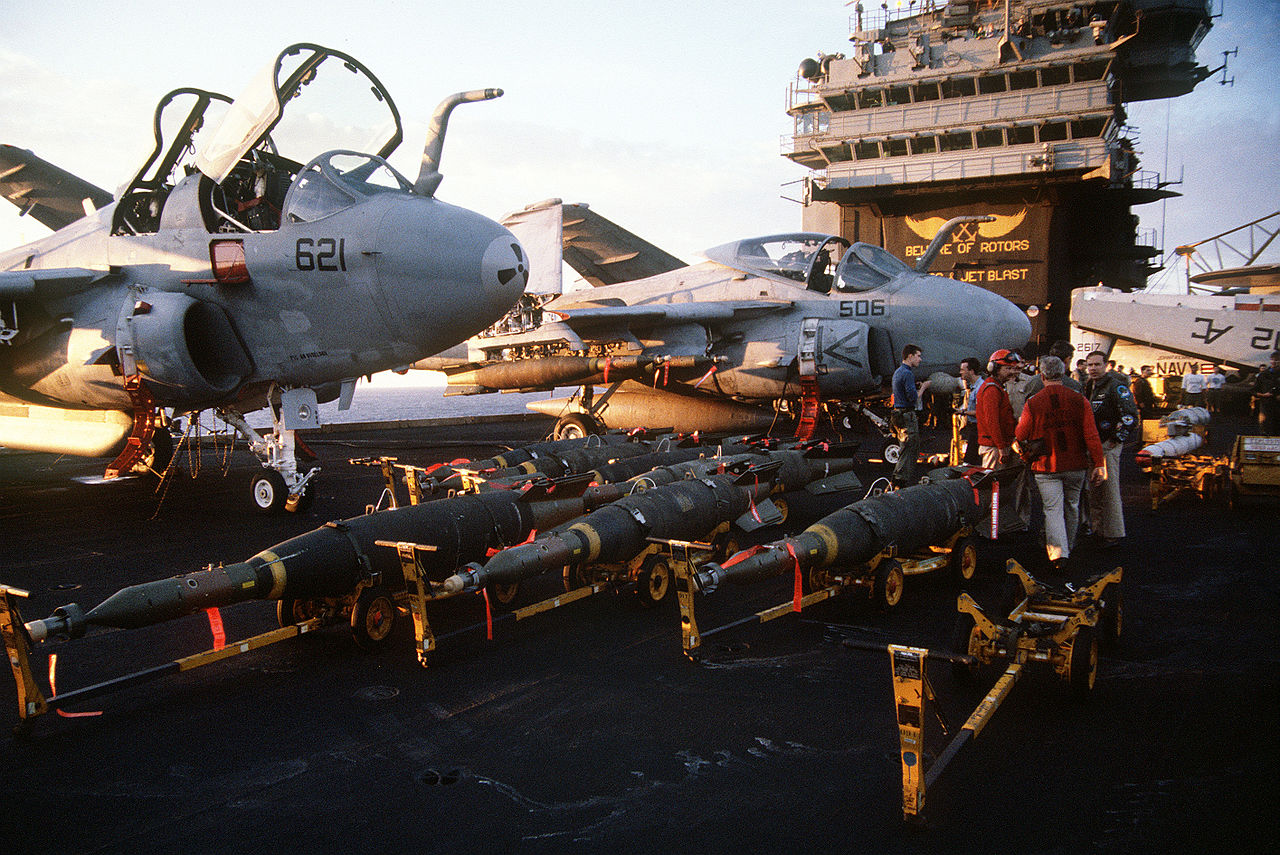Few aircraft have captured my imagination like the Grumman A-6 Intruder, and the aircraft’s history is sprinkled with awesome obscurities, thrust vectoring nozzles being one of them. Over the decades, the type was adapted into a tanker (KA-6D), and suppression of enemy air defenses aircraft (A-6B), and, most famously, into the an outstanding electronic warfare platform (EA-6A and EA-6B), the latter of which still serves the USMC today. But lots of other sub-variants were built, and maybe the most intriguing is the A-6C.
Only a dozen A-6Cs were fielded, all of which were converted from A-6As starting in 1968 with their combat debut occurring in 1970. Their role was to specifically go after targets along the Ho Chi Minh Trail, North Vietnam’s key logistical route that cut in and out along the Vietnam-Laos border. Even under mass bombardment, breaking the trail had been nearly impossible, so the Pentagon looked towards high technology to affect the situation. One such application was the A-6C with its massive and somewhat futuristic TRIM pod attached to its belly.

The name stood for Trails, Roads, Interdiction, Multi-Sensor, an adequate description for the pod’s mission and configuration. Inside the big fairing were low-light and infrared cameras that allowed A-6C crews to navigate visually and to identify targets such as people vehicles along the trail at night. The optics were a far cry from the FLIR systems and targeting pods found on virtually every American tactical military aircraft today, or even those found domestically on police and news helicopters, but at the time the technology was cutting-edge. The two systems were mounted side-by-side behind flat panes of glass in a rotating turret located at the front of the pod. The low-light TV camera offered a wider field of view than the more narrow field of view offered by the infrared camera.

In addition to the A-6C’s optical sensors, the Black Crow engine ignition-detection system was also fitted. This system was effective in any weather and even while targets were concealed visually under thick jungle canopy. It detected the microwave emissions from a vehicle’s spark plugs firing and gave targeting coordinates for the host aircraft to fire on. The first AC-130 gunships also used the system over the Ho Chi Minh Trail successfully. In addition to the TRIM pod and Black Crow, the charlie model of the A-6 also saw major upgrades to its navigational and fire control radars and other avionics systems.

Although the concept behind the A-6C held great promise, the technology was lacking, and the big pod imposed a severe performance tax on the Intruder. This included substantially limiting the amount of ordnance the jet could bring back to the boat if no targets were found during nighttime hunting missions, as well as increased fuel burn throughout the aircraft’s flight envelope.

Just one A-6C was lost in a mishap, and many of the surviving examples ended up being converted over to the Intruder’s ultimate operational configuration following the end of the war. Even though the A-6C was not a huge success, it paved the way for this final A-6 variant, as the A-6E TRAM (Target Recognition and Attack Multi-sensor) would feature much more evolved and miniaturized infrared systems. These were housed in a small turret under the A-6E’s nose that contained a FLIR, laser designator and spot tracker, and a computer that tied the system into the A-6E’s integrated avionics suite. Many of the lessons learned in the A-6C program were taken into account when developing the A-6E TRAM.

A-6Es would see service in Libya and in especially in Iraq, where they pummeled targets with laser-guided bombs. Although the A-6E TRAM was an amazing all-weather war-fighting machine, no version of “Flying Frying Pan” could compare charismatically with the pioneering, rare, and futuristic looking A-6C. It was another short-lived but unique highlight in what was a very diverse time for naval aviation.
Contact the author: Tyler@thedrive.com
